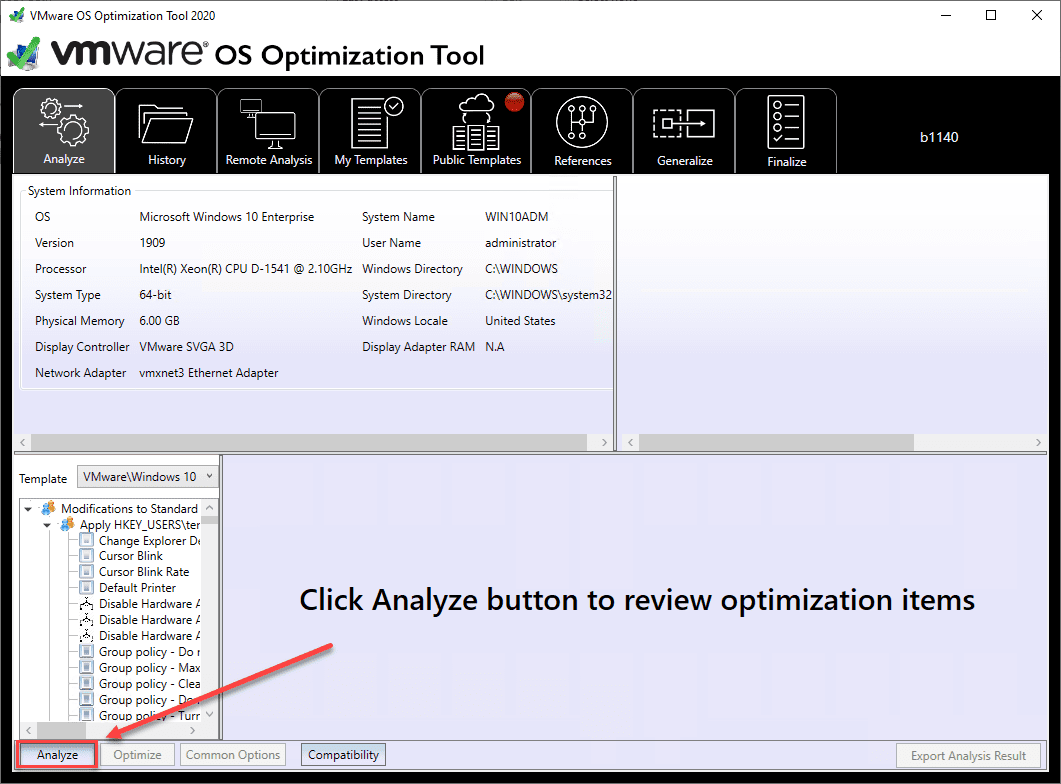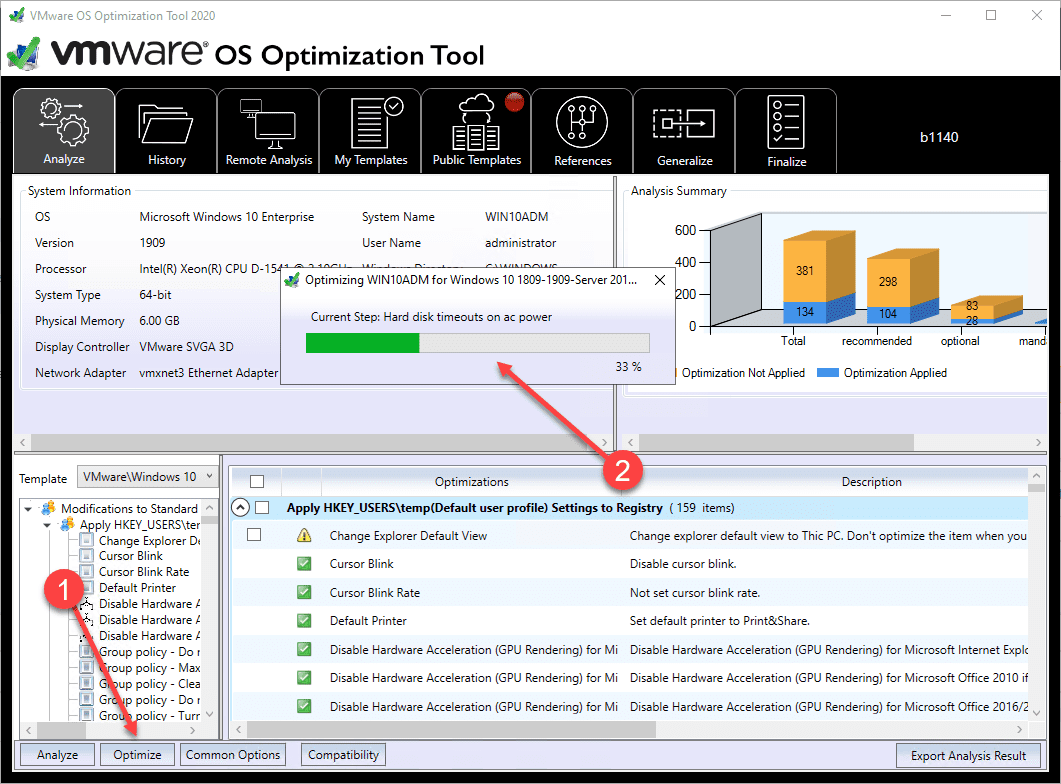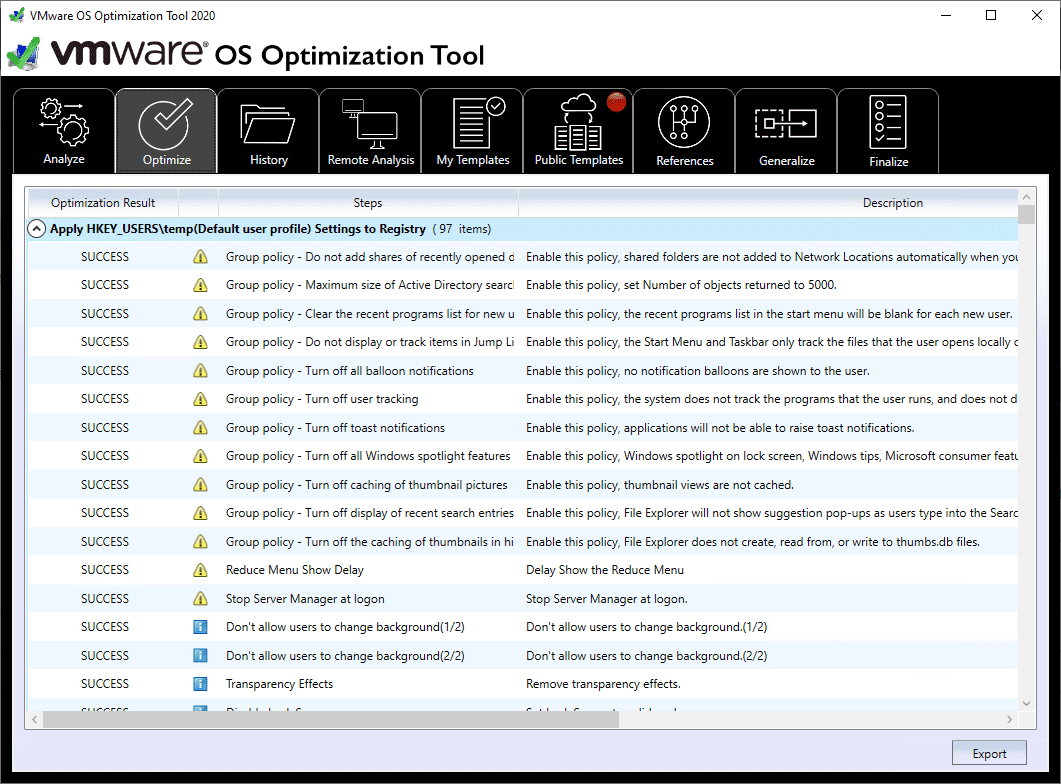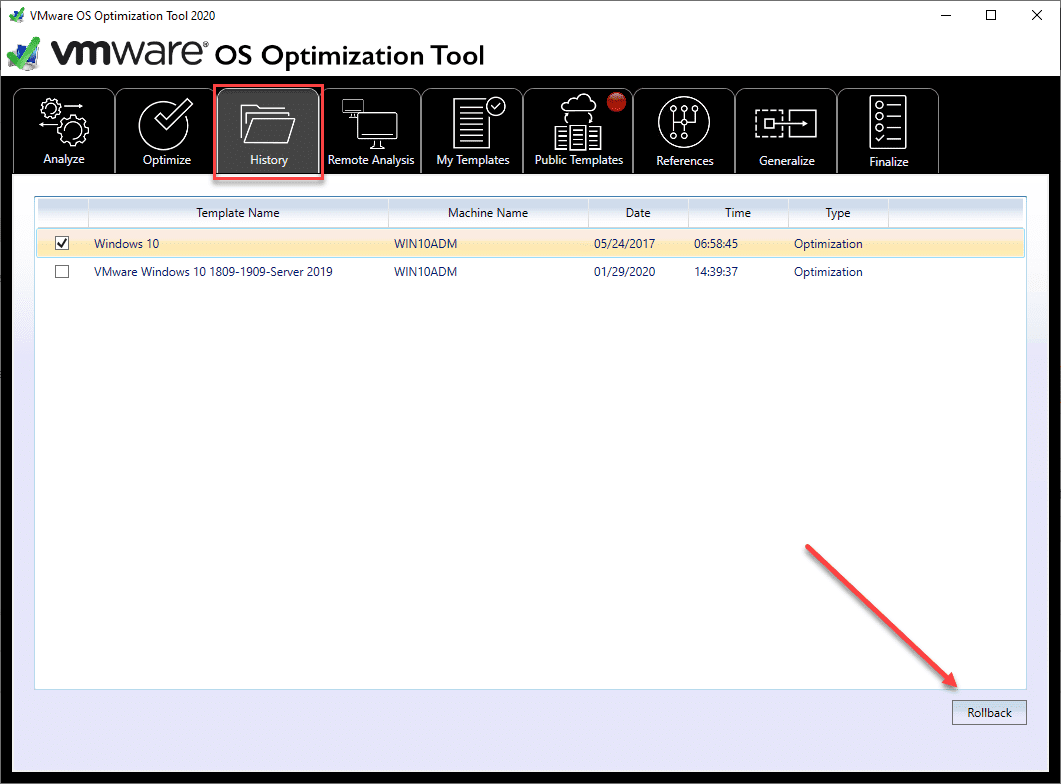VMware OS Optimization Tool New Release Download
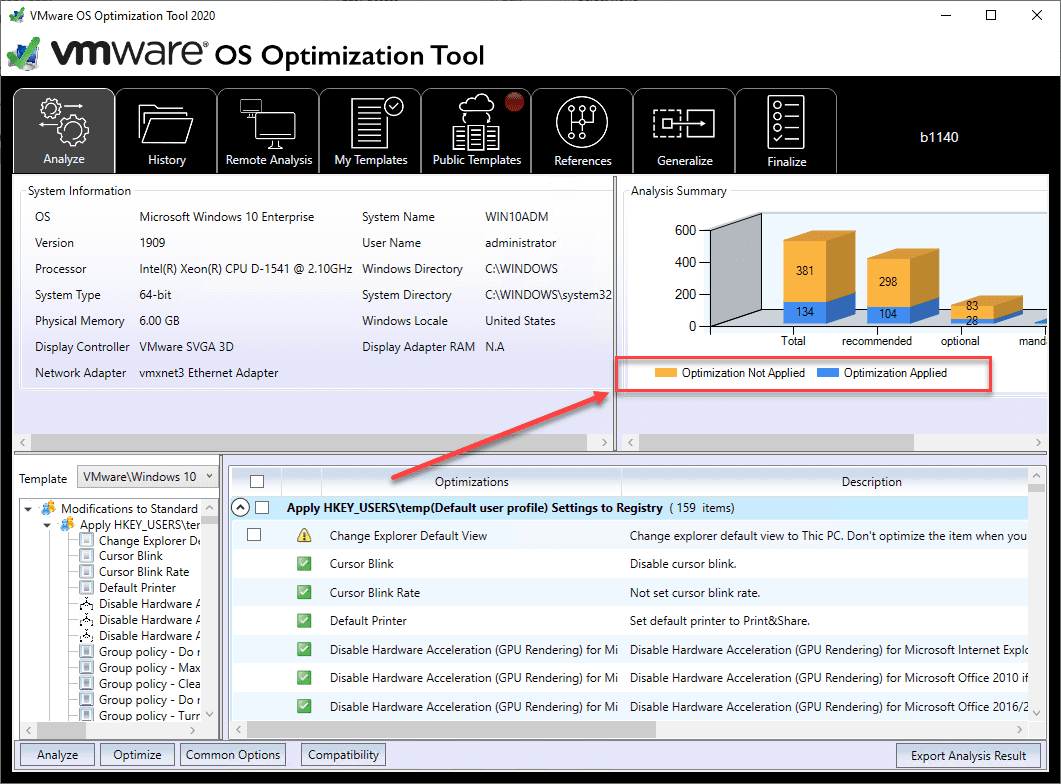
Are you running a VDI environment? Have you wondered how you need to tweak your environment for use with VMware Horizon VDI? In case you haven’t heard, VMware has a VMware OS Optimization Tool that helps prepare and optimize Windows 10/8/7 as well as Windows Server 2019/2016/2012/2008 systems for use with VMware Horizon. In the past few days, there was a major new release dropped on the VMware Flings site. In this post, we want to quickly cover VMware OS Optimization Tool new release download to see how to get your hands on the new tool and the features contained in this release.
What is the VMware OS Optimization Tool?
In a nutshell, the VMware OS Optimization Tool takes the major, heavy lifting out of the process of making all the tweaks and recommended changes to a Windows Server and client operating system to make sure that it performs optimally in a VDI environment.
Included with that, the tool provides customizable templates to enable or disable Windows system services and features in line with the recommendations made by VMware according to documented best practices.
Many of the services and default behaviors included with Windows are unnecessary. By disabling unneeded services and other performance impacting settings, both performance and the end user experience are optimized.
The VMware OS Optimization Tool performs the following tasks for you:
- It analyzes and optimizes the performance of the Windows system you will be using for VDI
- You can also remotely analyze a system to determine the tweaks and optimizations that need to be made
- It provides history and rollback capabilities to restore settings that have been changed by the optimization tool in case there is a need to do so
- It manages templates for you
- It can run sysprep
- It can finalize an image
VMware OS Optimization Tool New Features
The following are notes from the VMware Fling site change log regarding the new features contained in this release of the VMware OS Optimization Tool:
Optimize Results
- New button has been added to the results page that displays once an optimization job has completed. This new Export button allows you to save the results page as an HTML file.
Generalize
- New option button that simplifies the task of running Sysprep. This is by using a standard answer file. Edits can be made to the answer file before running Sysprep with it.
Finalize
- New option button to automate many common tasks that are typically run as a last step before you shut down Windows to use the VM in Horizon.
- These include the system clean up tasks (NGEN, DISM, Compact and disk clean up) that were previously provided in the Common Options dialog. This also includes clearing event logs, KMS information and releasing the IP address.
Common Options
- System clean up tasks have been removed from the common options so will now not run during optimize but instead should be run as part of the Finalize process.
- New tab for Security options. This allows for the quick selection of common settings that might need to be left enabled depending on the security requirements. This offers control over Bitlocker, Firewall, Windows Defender, SmartScreen, HVCI.
Command Line
- Added command line parameter to allow the tool to run without applying optimizations. This is part of the -o parameter called none that then allows you to run things like the system cleanup tasks (NGEM DISM, etc.) without also having to optimize at the same time.
- VMwareOSOptimizationTool.exe -o none -t template -systemcleanup 0 1 2 3
WebCache - Changed default to not disable Webcache. In testing this was shown to break Edge and IE browsers ability to download and save files. The settings are still available in the Windows 10 templates if you want to disable Webcache.
Guides
- Updated OSOT user guide: VMware Operating System Optimization Tool Guide.
- Updated Creating an Optimized Windows Image for a VMware Horizon Virtual Desktop guide coming soon.
Optimizing Windows 10 Using the VMware OS Optimization Tool
The following is a look at a few screens of the new VMware OS Optimization Tool showing the analyze, optimize, and rollback screens.
First, download the tool from the official VMware OS Optimization Tool site. The download is a ZIP file that is around 5MB and extracts to around 16MB worth of data.
When you first launch the VMware OS Optimization Tool, if you have never used it before, you first run the Analyze step. This analyzes your system for the current state of settings, configuration, and other configurables to see what may need to be adjusted.
After a few moments, the tool should come back with recommended configuration changes for your system. It will display the current Optimization applied and the recommended Optimization Not Applied. These “not applied” settings are the settings that get changed when you run the Optimize process.
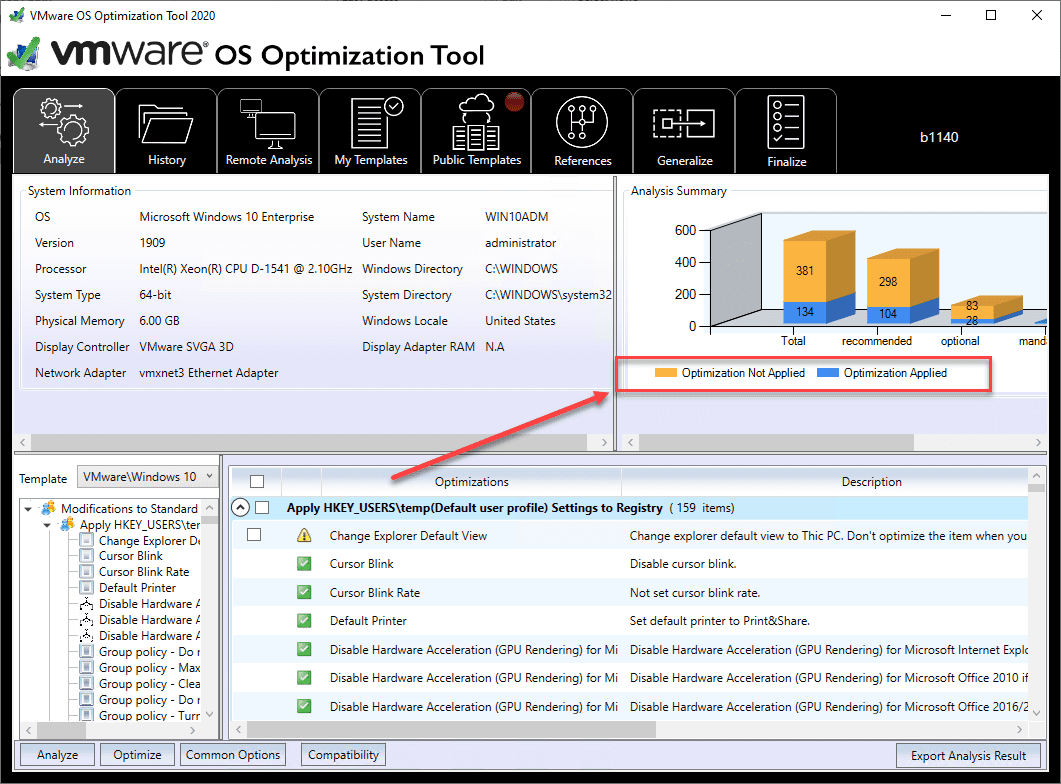
Click the Optimize button. This will kick off the applying of configuration changes to the Windows OS.
After a few minutes, the tool will display the results of the applied optimizations.
You may wonder, “what if I want to revert back to the settings before running the optimization tool?”. This is a valid question. The VMware OS Optimization Tool has you covered. If you click the History button in the top ribbon. It will display the various “states” that it has captured. You can rollback your Windows OS to the previous state before the optimizations were applied. It basically reverses the operation that it performed when applying the configuration changes.
Use Cases
The obvious use case here is VDI. However, you are not limited to running the VMware OS Optmization Tool for VDI purposes. You can run the tool on any supported Windows installations and reap the benefits of improved performance.
I like to run this tool on dedicated Windows RDP boxes and other boxes that I will be working from to reap the rewards of a better user experience that allows trimming down resources applied to VMs.
Concluding Thoughts
The VMware OS Optimization Tool new release download provides some great new tweaks and fixes to an already great tool. You can easily use the tool to apply the recommended tweaks for using a Windows OS for VDI purposes or to simply improve the performance of a Windows VM in general.
There are many unnecessary services and other bloat that is turned on for pleasing the eye rather than performance. This tool helps to eliminate any unneeded resource usage and allow focus to be placed on efficiency and performance.


